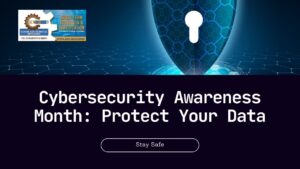
As technology continues to advance rapidly, so do the threats that come with it. Cybercrime has evolved and become more sophisticated, targeting not just businesses but also individuals. In this day and age, everyone is a potential victim of cybercrime, whether it’s phishing scams, malware, or ransomware.
With cyber threats becoming increasingly complex and prevalent, cybersecurity education is more critical than ever. In this blog post, we will discuss the most significant cyber threats that individuals face and how education and awareness can help prevent these threats from becoming a reality.
Additionally, we will delve into the strategies that organizations can implement to protect their systems and data effectively.
Overview of Cyber Threats Facing Individuals
The digital age has brought with it numerous conveniences, but it has also given rise to new threats, particularly in the realm of cybersecurity. Individuals face an array of cyber threats every day, including phishing scams, malware, ransomware, and social engineering attacks.
With the continued evolution of cybercrime, it’s essential to stay informed about these threats and adopt proactive measures to safeguard personal information. Cybersecurity education is vital for individuals to understand how to protect their digital lives.
Moreover, organizations need to adopt effective strategies to prevent cyberattacks. By working together, we can fight back against the most significant cyber threats facing individuals.
Phishing Scams
Phishing scams are a common type of cyberattack where attackers send fake emails or messages, posing as trustworthy sources, to trick people into sharing sensitive information or clicking on malicious links.
These scams can lead to identity theft, financial loss, and other security risks. To avoid falling for phishing scams, it is crucial to verify the sender’s identity, avoid clicking on suspicious links or attachments, and use anti-phishing tools.
Additionally, cybersecurity education can help individuals identify and prevent these types of attacks.
Malware
Malware, short for malicious software, is a significant cyber threat facing individuals today. It refers to software specifically designed to disrupt, damage, or gain unauthorized access to computer systems or networks. Malware can take the form of viruses, worms, Trojans, or spyware and is typically spread through email attachments, downloads, or malicious websites.
Once installed, malware can compromise the security and privacy of personal information, steal passwords, and even hijack devices. It is crucial for individuals to have up-to-date antivirus software and be cautious when downloading files or clicking on suspicious links to protect against malware attacks.
Ransomware
Ransomware is a type of malicious software that encrypts files or locks down an entire computer system until a ransom is paid to the attacker. It has become one of the most prevalent and destructive cyber threats facing individuals.
Once infected, victims are left with limited options and are often forced to choose between paying the ransom or losing their valuable data. To protect against ransomware, individuals should regularly update their software, backup important files, and exercise caution when opening suspicious emails or clicking on unknown links.
Cybersecurity education plays a crucial role in raising awareness about the dangers of ransomware and teaching individuals how to defend against it effectively.
Social Engineering Attacks
Cybercriminals use deceptive tactics like social engineering attacks to trick people into disclosing private information or taking actions that could jeopardize their security. These attacks often involve psychological manipulation, such as impersonating trusted entities or creating a sense of urgency.
By preying on human vulnerabilities, cybercriminals exploit individuals’ trust and naivety, making social engineering attacks highly effective. To counteract this threat, individuals must remain vigilant and skeptical of unexpected requests or suspicious messages.
Additionally, organizations should prioritize cybersecurity education that teaches individuals to recognize and respond appropriately to social engineering tactics.
Importance of Cybersecurity Education
Cybersecurity education is of utmost importance in today’s digital age, where cyber threats continue to evolve and become more sophisticated. Without proper education and training, individuals and organizations are vulnerable to cyberattacks that can have severe consequences, both financially and in terms of reputation.
One program that exemplifies the importance of cybersecurity education is the RW2 Cybersecurity Program. This program not only provides practical experience through hands-on projects but also emphasizes the development of socially responsible choices and ethical behavior.
By engaging with industry-standard resources and gaining real-world experience, students are better prepared for careers in information security and are equipped to handle the ever-changing cyber threat landscape.
Moreover, the program introduces students to coding fundamentals, teaching them how to create usable apps and sharpen their computational thinking skills. The incorporation of block-based programming and text-based programming allows students to transition seamlessly and understand the power of text-based programming using languages like Python®.
In addition to technical skills, the RW2 Cybersecurity Program also focuses on transferable and employability skills. This ensures that students not only have the technical expertise but are also interview-ready and prepared for future career opportunities in cybersecurity.
Effective Strategies to Prevent Cyber Attacks
Preventing cyberattacks is crucial in today’s digital age. Organizations must implement effective strategies to safeguard their systems and sensitive data from malicious threats. Here are some key strategies that can help prevent cyberattacks:
Regularly Update Software and System
Keeping software and systems up-to-date is vital, as it ensures that the latest security patches and fixes are installed. This helps eliminate vulnerabilities that hackers often exploit.
Use Strong and Unique Passwords
Passwords should be complex, with a combination of uppercase and lowercase letters, numbers, and special characters. It is essential to use unique passwords for each account and avoid sharing them with anyone.
Conduct Regular Employee Training and Awareness Programs
Organizations should educate their employees about common cyber threats, phishing scams, and best practices for safe online behavior. Regular training sessions can significantly reduce the risk of employees falling victim to cyberattacks.
Implement Firewall and Antivirus Software
Firewall and antivirus software play a crucial role in detecting and blocking potential threats. Regularly update and maintain these security tools to ensure their effectiveness.
By implementing these strategies, organizations can effectively minimize the risk of cyberattacks and protect their valuable assets and sensitive data. It is important to remember that cybersecurity is an ongoing process that requires constant vigilance and adaptation to emerging threats.
At this juncture, we would like to express our gratitude to Compass Minerals for partnering with us in starting our cybersecurity training program. Their generous contribution of $10,000 has enabled us to educate individuals about cybersecurity and promote a safer online environment. Together, we can combat cyber threats and make the digital world a more secure place.
Key Takeaways
In today’s world, cybercrime has evolved into a significant threat to individuals and organizations alike. Malware, ransomware, and social engineering attacks are just a few of the cyber threats individuals face daily.
To prevent such attacks, individuals must have comprehensive cybersecurity education, which should be regularly updated. Also, implementing effective strategies like multi-factor authentication, encryption, and routine security updates can help prevent cyberattacks. It’s crucial to prioritize cybersecurity education and proactive measures to mitigate potential threats effectively.
Ready to prioritize your cybersecurity education? Class begins on August 21, so mark your calendars and get ready to embark on a transformative educational journey with us. Join us today



